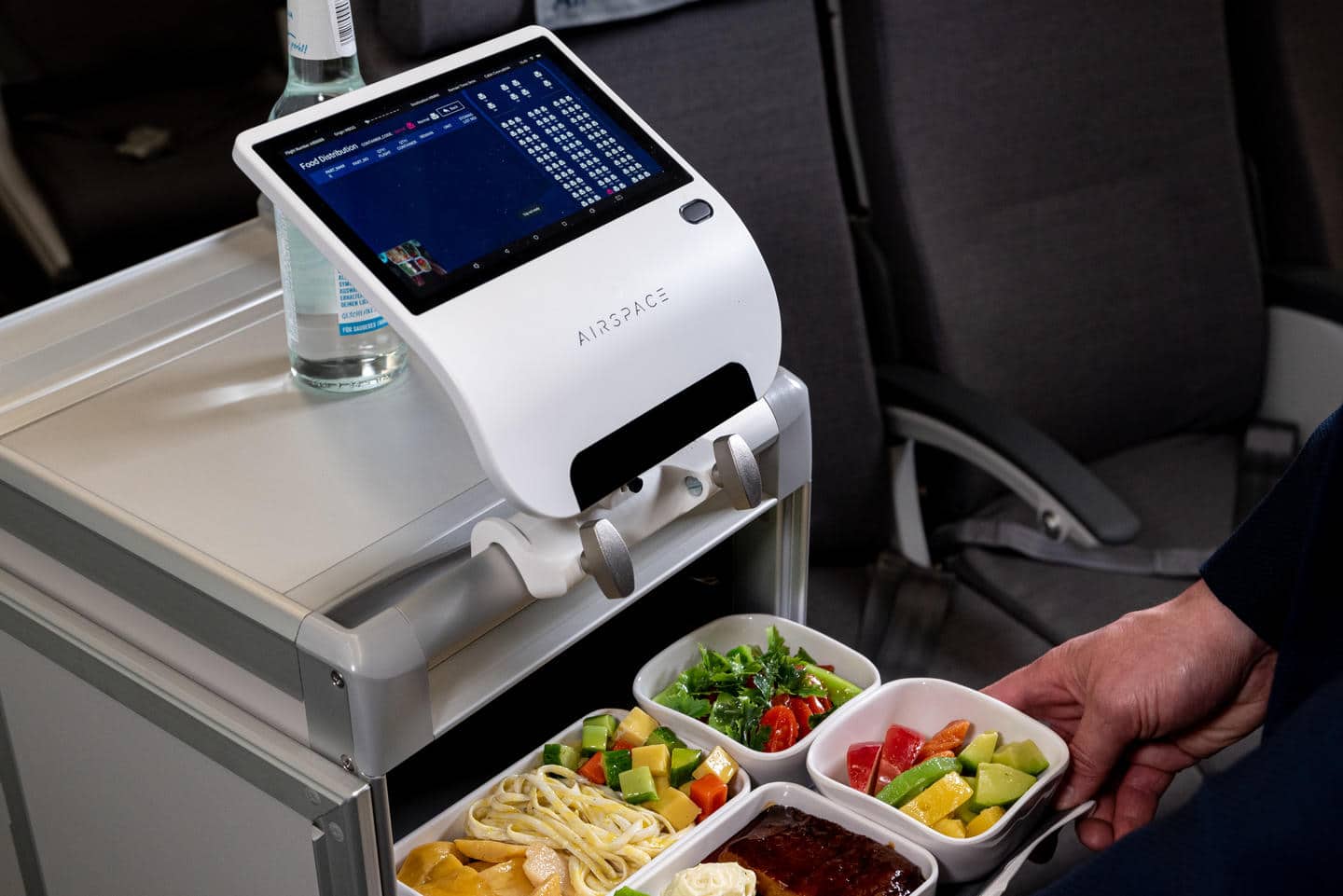Aerospace
Can the tracking of in-flight catering improve airline sustainability.

How can more precise tracking of in-flight catering – from meal and beverage service to the collection and disposal of waste – lead to more sustainable air travel?
As we all know, digital technologies are very innovative. In one them Airbus has implemented automatic data collection for passenger information, onboard meal consumption, and tracking the amount of leftover food and beverages. Airlines might optimise their catering services and better manage after-meal disposal by integrating such data into an artificial intelligence-driven system, which could result in double-digit CO2 emissions reductions through weight reduction and fuel savings.
Elements of this solution have been optimised in realistic conditions aboard the Airspace Explorer. Airbus uses a dedicated cross-programme flight test platform to test and demonstrate new innovations for future aircraft cabins.
The volume of airline cabin waste is expected to double by 2030.
“An estimated 1.43 kilograms of cabin waste is generated by each passenger per flight, with unused food and drinks calculating more than 20%,” clarified by Michael Bauer, an Airbus Cabin and Cargo Architect. “The situation is more complicated with the prediction that overall airline cabin waste, which amounted 6.1 million tonnes in 2018, will more than double by 2030.
The IATA survey will be published in 2021. The Food Scanner, an artificial intelligence-enabled device that analyses the composition of food in a simple point-and-shoot process, is Airbus’ solution for tracking and controlling in-flight catering. It works on the same principle as scanners, which are becoming more common in supermarkets today.
The Food Scanner’s downward-facing camera recognizes what is on the meal tray as the cabin attendant pulls it out of the trolley during in-flight service, and then images what is left when the tray is returned. The beverage bottles and cans that are typically placed atop the trolly are tracked by a horizontally oriented barcode scanner.
Optimising data from the Food Scanner’s utilisation.
Data from the Food Scanner can be processed using a separate, off-board cloud-hosted dashboard that generates KPIs (key performance indicators) based on trends and statistics, allowing for highly accurate catering planning and food/beverage consumption prediction. This can be further optimised by making a pre-flight meal ordering system available to passengers, which is already being used by a growing number of airlines, particularly for their premium passengers.
Airbus patents economy-class ‘sleep pods’(Opens in a new browser tab)
Airbus solution promises better management of the amount of food produced at the source, as well as a reduction in dedicated catering space aboard the aircraft, and improvement in waste collection and separation. Furthermore, it would limit the amount of food and beverages discarded upon arrival, with some countries requiring such waste to be burned.
Introduction of the artificial intelligence-enabled Airbus Food Scanner.
“The initial feedback from airlines and cabin crews was positive,” said Sascha Thoerner, Airbus’s Airspace Explorer Programme Architect. ”Displaying the Food Scanner in such a realistic environment with end-to-end connectivity is a critical step toward maturing this system.” Airbus would be able to collaborate with potential partners, such as airlines, caterers, and system manufacturers, on in-service trials, leading to eventual production.”
Airbus’ Airspace Explorer is testing and highlighting a number of customer-centric innovations on a specially configured A350-900 flight test aircraft outfitted with an award-winning Airspace cabin. These developments are mainly focused on the passenger experience, digitalisation, onboard health, and sustainability.

Aerospace
When Ratan Tata was denied entry to the airfield at the Aero India show, he waited

During our visit to Aero India 2019, we had the unexpected opportunity to see Ratan Tata at the event, which was a thrilling moment for us. However, there was a surprising hiccup when the security staff didn’t allow him to enter due to a lack of a security pass.
Despite this, he remained calm and patiently waited for about 20 minutes until a member of the Tata team brought him the required pass, after which he calmly proceeded inside. It was a humbling sight, showcasing his composed demeanor even in such situations.
Ratan Tata ji is not only a renowned industrialist but also a trained pilot, holding a pilot’s license. In 2007, he became the first Indian civilian to fly the F-16 Falcon during the Aero India show in Bangalore—a proud moment for the nation.
His passion for aviation extended beyond flying, as he played a key role in shaping India’s aerospace industry. Under his leadership, Tata ventured into manufacturing and maintaining aerospace components while upholding its legacy of quality. Notably, Tata’s collaboration with Airbus to develop and manufacture the C295 aircraft is a testament to its growing influence in the sector.
-

 Aviation2 months ago
Aviation2 months agoMicrosoft Flight Simulator Raises $3 Million to Bring Back the An-225 Mriya
-

 Airlines2 months ago
Airlines2 months agoQantas Engineers Stage Walkout Over Cost of Living Concerns
-

 Airlines2 months ago
Airlines2 months agoQatar Citizens Can Travel to the United States Without a Visa
-

 Aviation2 months ago
Aviation2 months agoQatar Airways bans these new Electronic Devices on plane
-

 Airlines2 months ago
Airlines2 months agoJapan Airlines Rolls Out Free Domestic Flights to International Passengers
-

 Defence2 months ago
Defence2 months agoWhich Country Has the Largest Fleet of Fighter Aircraft?
-

 Airport2 months ago
Airport2 months agoWestern Sydney Airport Welcomes Its First Plane After 6 Years of construction
-

 Travel2 months ago
Travel2 months agoQatar Airways Launches Four Additional Flights from Amsterdam








